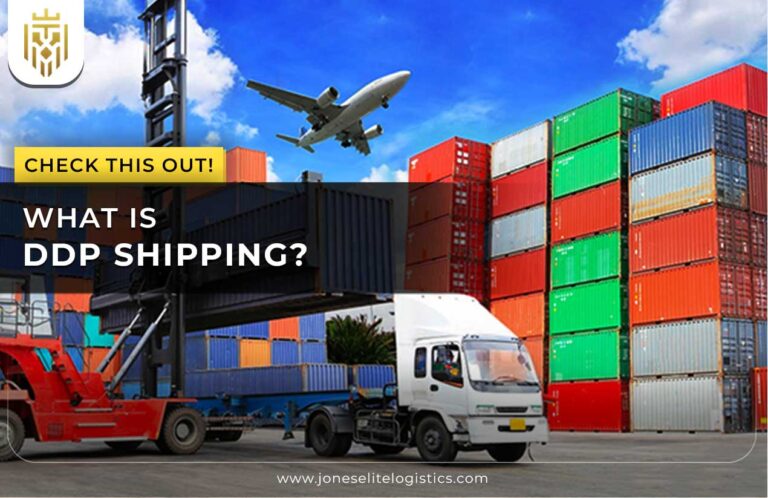What is Sourcing in Supply Chain?
Sourcing in supply chain management is the process of identifying and evaluating suppliers to provide goods and services. It directly impacts product quality, cost, and availability, making it an integral part of supply chain management. Understanding what is sourcing in supply chain management is vital for businesses aiming to streamline operations and improve procurement strategies.
Role and Importance of Sourcing in Supply Chain:
The importance of sourcing in supply chain management lies in its ability to enable businesses to choose suppliers that meet both quality and cost requirements. Sourcing also enhances purchasing power, supporting long-term growth and sustainable supply chains. By optimizing supply chain sourcing, companies can better manage their budgets and improve overall operational efficiency.

Types of Sourcing in Supply Chain Management:
Sourcing includes outsourcing, in-sourcing, near-sourcing, global sourcing, and low-cost country sourcing, each offering unique benefits depending on company goals and supply chain requirements.
Outsourcing:
Outsourcing involves hiring external suppliers to handle goods or services that were once produced in-house, thus improving production efficiency. This method allows companies to focus on their core functions while streamlining supply chain sourcing. Outsourcing is a common strategy in global supply chain management to optimize costs and resources.
In-sourcing:
In-sourcing keeps production responsibilities within the organization, allowing companies to maintain tight control over supply chain planning. It enhances real-time decision-making, providing greater oversight and flexibility in managing operations. For certain industries like automotive and pharmaceutical, supply chain management through in-sourcing ensures higher quality and consistency..
Near sourcing:
Near-sourcing involves locating production closer to the end consumer, reducing costs like transportation and improving response times. This method is especially useful in global supply chain management to reduce overall logistics costs. Companies leveraging supply chain sourcing through near-sourcing can benefit from faster deliveries and enhanced market responsiveness.
Low-Cost Country Sourcing:
Low-cost country sourcing focuses on procuring materials from countries with lower production costs, reducing overall expenses. This form of supply chain sourcing is particularly popular in industries aiming to minimize operational costs while maintaining product quality. It plays a significant role in global supply chain management, utilizing the cost advantages of various regions.
Global Sourcing:
Global sourcing involves procuring goods and services from international suppliers, offering companies access to resources not available domestically. It supports global supply chain management by reducing production costs and introducing companies to new markets. This method of supply chain sourcing enables businesses to remain competitive in a globalized economy.
Difference between Sourcing and Procurement in Supply Chain Management:
Sourcing in supply chain management emphasizes building and maintaining supplier relationships, while procurement focuses on acquiring goods and services. Sourcing is more strategic, using procurement data to evaluate and enhance supplier performance. Together, they strengthen overall supply chain management.
How to Streamline Sourcing:
Streamline sourcing by creating clear plans, investing in advanced technologies, building strong vendor partnerships, and continuously optimizing processes to enhance sourcing efficiency and reduce procurement costs.

Creating a Sourcing Plan:
A well-structured supply chain sourcing plan involves defining objectives, conducting thorough market research, and selecting the best suppliers. By aligning sourcing activities with supply chain management goals, businesses can create sustainable and cost-effective strategies. Strategic supplier partnerships help ensure long-term success in supply chain planning.
Investing in Advanced Technologies:
Leveraging technology in supply chain management enables companies to streamline sourcing through automation and data-driven insights. Digital procurement systems and e-auctions enhance supply chain sourcing efficiency. Advanced analytics also play a crucial role in optimizing supply chain planning and improving decision-making.
Building Strong Vendor Partnerships:
Strong vendor partnerships are essential for efficient supply chain sourcing. Open communication and favourable contracts help reduce supply chain risks and ensure smooth operations. Engaging vendors in supply chain planning discussions can lead to mutually beneficial solutions, enhancing both short- and long-term goals in global supply chain management.
Benefits of Sourcing in Supply Chain:
Effective sourcing reduces costs, enhances supplier quality, mitigates risks, and ensures better supplier relationships, contributing to a more reliable and efficient supply chain.
Mitigating Costs:
Sourcing in supply chain management can reduce costs through strategic supplier negotiations and spend analysis. Companies that focus on optimizing their supply chain sourcing can streamline procurement and lower expenses. Incorporating predictive analytics into supply chain planning helps businesses stay ahead of fluctuating market demands.
Reduced Risk Factor:
By vetting suppliers and prioritizing quality, supply chain sourcing helps minimize risks associated with supply chain disruptions. Effective supply chain management processes also involve building resilient supplier relationships to safeguard operations. Outsourcing to reliable partners reduces the risk of failures in global supply chain management.
Quality Improvement:
Sourcing in supply chain management is crucial for ensuring that suppliers meet high-quality standards through audits and inspections. Strategic supply chain sourcing focuses on long-term supplier partnerships, driving innovation and improving product quality. Collaborating with suppliers enhances supply chain planning for quality assurance and continuous improvement.

Seamless Communication:
Effective communication is vital in supply chain management, facilitated by IT systems that share data across stakeholders. Sourcing in supply chain management benefits from seamless data integration, improving productivity and decision-making. Real-time information sharing enhances coordination and response times in global supply chain management.
FAQs
1) What is Sourcing in Supply Chain?
Sourcing in supply chain management involves identifying and evaluating suppliers to provide goods and services, directly impacting product quality, cost, and availability, making it essential for effective operations.
2) What are the Types of Sourcing in Supply Chain Management?
Types of sourcing include outsourcing, in-sourcing, near-sourcing, global sourcing, and low-cost country sourcing, each offering unique benefits based on company objectives and specific supply chain requirements.
3) What are the Benefits of Sourcing in the Supply Chain?
Effective sourcing reduces costs, enhances supplier quality, mitigates risks, and strengthens supplier relationships, contributing to a more reliable and efficient overall supply chain, promoting long-term growth.
4) How to Streamline Sourcing?
To streamline sourcing, create clear plans, invest in advanced technologies, build strong vendor partnerships, and continuously optimize processes, enhancing efficiency and reducing procurement costs within the supply chain.







